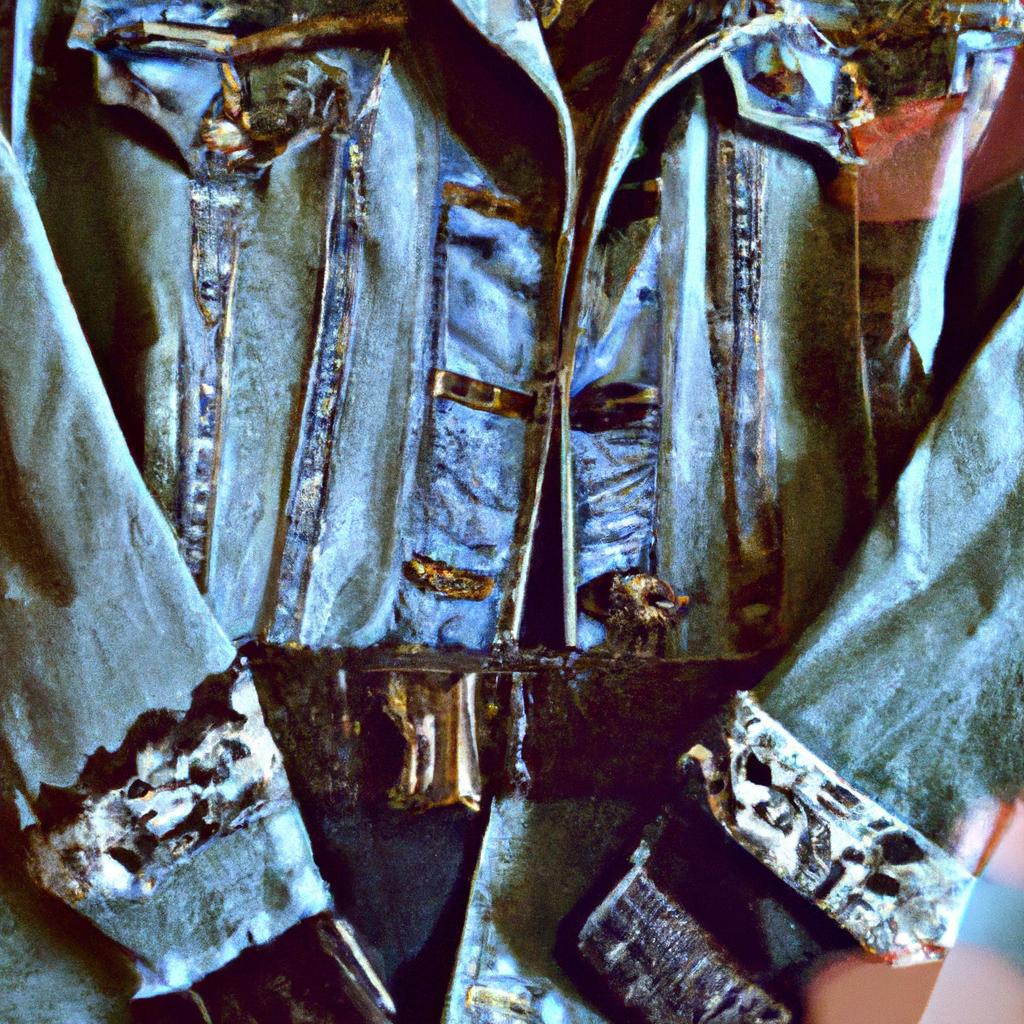
Introduction
Welcome to the world of vintage and retro fashion! These timeless styles have been growing in popularity, especially through fashion archives. But what exactly are vintage and retro styles? Let’s dive in and explore.
Vintage fashion refers to clothing or accessories that are at least 20 years old, typically from a specific era such as the 1920s or 1950s. Retro fashion, on the other hand, is a newer trend that takes inspiration from past styles and incorporates them into modern looks.
So why are these styles making a comeback? Nostalgia plays a big role, as people are drawn to the familiarity and uniqueness of vintage and retro fashion. Plus, with the increasing concerns of sustainability in the fashion industry, these styles offer a way to repurpose and recycle old pieces.
In this guide, we’ll delve deeper into the world of vintage and retro fashion, from understanding their history to achieving the perfect vintage/retro look. Let’s get started!
Introduction
Welcome to the world of fashion archives, where vintage and retro styles reign supreme! At first glance, these two terms may seem interchangeable, but they actually have distinct characteristics that set them apart. Vintage refers to clothing and accessories from a previous era, typically 20-100 years old, while retro evokes styles from the recent past, usually within the last 20 years.
In recent years, there has been a resurgence of interest in these nostalgic styles, with fashion archives playing a crucial role in preserving and showcasing them. Let’s explore the differences between vintage and retro, and how they have influenced modern fashion trends.
Understanding Vintage Styles
Vintage fashion is a broad term that encompasses clothing and accessories from different eras, each with its own unique characteristics. For example, Victorian fashion is known for its intricate lace and corsets, while the 1920s brought about the rise of flapper dresses and the iconic drop waist silhouette. Other notable vintage eras include the 1950s with its full skirts and nipped waists, and the psychedelic patterns and bell-bottoms of the 1970s.
When it comes to authenticating vintage pieces, it takes time and knowledge. Look for details like quality craftsmanship, materials, and labels to determine the garment’s age and value. It’s also essential to be aware of common alterations and reproductions that could affect the item’s authenticity.
Embracing Retro Styles
Retro fashion takes inspiration from past decades and puts a modern spin on it. It often incorporates elements from multiple eras to create a unique and nostalgic look. The influence of pop culture and iconic figures, such as Audrey Hepburn or Marilyn Monroe, can be seen in popular retro styles. Adding retro elements to your outfits can bring a touch of whimsy and personality, making your look stand out.
When incorporating retro pieces, it’s essential to strike a balance between old and new. Pairing a vintage top with modern jeans or vice versa creates an interesting contrast. Accessories such as sunglasses, scarves, or statement jewelry can also add a retro touch to any outfit.
Exploring Fashion Archives
Fashion archives play a crucial role in preserving and showcasing vintage and retro styles for future generations. They collect and preserve garments, accessories, and other fashion-related items to document the evolution of fashion. Some notable fashion archives include the Victoria and Albert Museum in London, the Costume Institute at The Metropolitan Museum of Art in New York, and the Kyoto Costume Institute in Japan.
If you’re looking for style inspiration, fashion archives are an excellent resource. Many offer online collections and exhibitions, making it accessible to all. You can also visit in person or attend fashion exhibitions to see the pieces up close and learn more about their history.
Achieving the Vintage/Retro Look
Now that you have a better understanding of vintage and retro styles, it’s time to incorporate them into your wardrobe. When shopping for vintage or retro pieces, pay attention to fit and quality, as these can affect how the garment looks and feels on your body. It’s also crucial to consider how you will style the piece and incorporate it into your existing wardrobe.
Proper care is essential for vintage and retro items to ensure their longevity. Always follow the care instructions and consider professional cleaning for delicate or valuable pieces. Proper storage, such as using acid-free tissue paper and garment bags, can also help preserve these pieces for years to come.
Conclusion
Vintage and retro styles may have originated from the past, but they are continually evolving and inspiring current fashion trends. With the help of fashion archives, these timeless styles can be enjoyed by generations to come. So go ahead, embrace your individuality and experiment with vintage and retro fashion – who knows, you might discover your new favorite look!
The Growing Popularity of Vintage and Retro Styles in Fashion Archives
In recent years, there has been a resurgence of interest in vintage and retro styles in the world of fashion. These timeless looks from past eras have captured the hearts of many and can now be seen in fashion archives all around the world.
But what exactly is the appeal of these styles? One factor is undoubtedly nostalgia. As the saying goes, “everything old is new again”, and this rings true in fashion as well. People are drawn to the nostalgia of past decades, whether it’s for a simpler time or a longing for their own memories associated with certain styles.
Moreover, vintage and retro styles have become increasingly popular due to their uniqueness and authenticity. In a world of fast fashion and mass production, these styles offer something special and one-of-a-kind. They also allow individuals to express their personal style and stand out from the crowd.
The impact of nostalgia on current fashion trends is evident in the incorporation of vintage and retro elements into modern designs. From statement pieces to subtle accents, these styles continue to inspire and influence the fashion industry today.
Fashion archives play a crucial role in preserving and showcasing these styles, making them easily accessible for those seeking inspiration or searching for authentic pieces. They offer a glimpse into the history of fashion and allow us to appreciate the evolution of style over the years.
With the growing popularity of vintage and retro styles, it’s clear that they are not just a passing trend, but rather a timeless and influential part of the fashion world. So why not embrace your love for vintage and retro and explore the vast collections found in fashion archives?
II. Understanding Vintage Styles
In the world of fashion, vintage styles hold a special place as they provide a glimpse into the past and evoke a sense of nostalgia. But what exactly is vintage fashion?
Vintage refers to clothing and accessories that are at least 20 years old. These pieces are often one-of-a-kind and reflect the fashion trends of a specific era or time period. Some of the most popular vintage styles come from the Victorian era, 1920s flapper fashion, the glamorous Hollywood looks of the 1950s, and the free-spirited bohemian styles of the 1970s.
But vintage fashion is more than just old clothes. Each era had its own distinctive characteristics and understanding these can help identify and authenticate vintage pieces.
To truly understand vintage fashion, it’s important to look at the historical context in which it existed. For example, Victorian fashion was characterized by corsets, high collars, and full skirts to reflect the conservative values of the time. On the other hand, the 1920s saw a shift towards shorter hemlines and looser silhouettes, reflecting the liberation and rebellion of the flapper lifestyle.
When it comes to identifying and authenticating vintage pieces, it’s important to take note of details such as fabric, construction, and labels. Being knowledgeable about the different eras and their fashion trends can also aid in this process.
Overall, vintage fashion is a celebration of history and individuality, with each piece telling its own unique story. By understanding the different eras and characteristics of vintage fashion, you can add timeless pieces to your wardrobe and embrace your personal style.
I. Understanding Vintage Styles
In order to fully appreciate and embrace vintage fashion, it’s important to understand its history and key characteristics.
Vintage fashion refers to clothing and accessories that are at least 20 years old and have become highly sought after for their uniqueness, quality, and historical significance. It is often recognized by its references to specific eras, such as the Victorian period, 1920s flapper style, 1950s silhouettes, and more.
During these eras, fashion was used as a form of self-expression and social status, with clothing being made by hand and tailored to fit each individual. This resulted in a wide variety of styles, materials, and craftsmanship, making vintage pieces highly desirable today.
When exploring vintage fashion, it’s important to understand the key characteristics of each era. For example, Victorian fashion was characterized by intricate detailing, corsets, and layers of fabrics, while 1920s fashion embraced the iconic flapper look with dropped waists, short hemlines, and beaded embellishments. Each era has its own unique style that contributes to the charm and appeal of vintage fashion.
- Tip: Look for details like fabric, silhouette, and construction methods to help determine the era of a vintage piece.
In addition to understanding the history and characteristics of vintage fashion, it’s also important to learn how to properly authenticate vintage items. With the rise in popularity of vintage fashion, there has also been an increase in counterfeit or reproduction pieces. To ensure you are purchasing authentic vintage pieces, look for reputable sellers and do your research on the brand, era, and materials used in a particular piece.
- Tip: Don’t be afraid to ask for help from experts or consult resources such as books, online guides, and vintage fashion forums.
Understanding Vintage Styles
To truly appreciate and embrace vintage fashion, it is important to understand the history and characteristics of the styles. From the elegant Victorian era to the bold and colorful 1960s, each decade has its own unique fashion trends. Here are some key points to help you identify and authenticate vintage pieces:
- Research: Before purchasing a vintage item, do your research on the specific era and style. Look for photos or videos from that time period to get a better understanding of what to look for.
- Label: Check for a label or tag that indicates the brand or designer. This can help determine the age of the piece and its authenticity.
- Materials: Pay attention to the fabric and materials used in the garment. Synthetic materials like polyester were not commonly used until the 1950s, so an item made with this fabric is likely not from the 1920s.
- Stitching and Details: Vintage pieces were often handmade or produced with more intricate details. Look for hand-stitched seams, unique buttons, and other small details that may indicate the age and authenticity of the item.
- Condition: It is important to carefully examine the overall condition of a vintage piece. Minor wear and tear can be expected, but significant damage or alterations can decrease the value and authenticity of the item.
- Certification: Some vintage sellers may provide a certificate of authenticity or provenance for the item. This can give you peace of mind and assure you that the item is indeed vintage.
Having a good understanding of vintage styles and how to identify and authenticate them can help you make informed purchases and build a unique and authentic vintage wardrobe.
III. Embracing Retro Styles
Retro fashion is all about bringing back the styles of the past and giving them a modern twist. It is often associated with nostalgia for a specific era or pop culture icons. Unlike vintage fashion, which refers to clothing from a specific time period, retro style can incorporate elements from different eras.
Some popular retro styles include 1950s pin-up, 1960s mod, and 1980s punk. These styles have resurfaced in recent years due to their iconic and timeless appeal. Many modern fashion designers also draw inspiration from retro styles and incorporate them into their collections.
One of the key elements of embracing retro fashion is understanding the influence of pop culture and iconic figures. This can range from classic Hollywood stars like Marilyn Monroe to music icons such as Madonna. Incorporating elements from these icons’ signature styles can add a unique touch to your retro look.
You don’t have to dress head-to-toe in retro to embrace this style. Mixing retro pieces with modern items is a great way to achieve a balance between old and new. For example, pairing a vintage band t-shirt with high-waisted jeans and sneakers can create a cool retro-inspired outfit.
Remember to have fun with your retro style and make it your own. Experiment with different eras and trends to find what works best for you. And don’t be afraid to mix and match to create a unique and personalized look!
Embracing Retro Styles
Retro fashion is a term used to describe clothing and styles that imitate or are inspired by trends from the past. While some may use the terms vintage and retro interchangeably, there are subtle differences between the two. Vintage refers to clothing that is from a specific era, typically at least 20 years old, while retro can encompass a wider range of time periods and often involves modern interpretations of vintage styles.
The connection between vintage and retro styles lies in their shared inspiration from the past. Retro fashion often takes elements from different eras and combines them to create a unique and updated look. This can include bold prints and patterns from the 1960s, high waisted silhouettes from the 1950s, or oversized jackets from the 1980s.
One of the reasons retro fashion has become so popular is its ability to evoke a sense of nostalgia. Whether it’s through iconic figures like Marilyn Monroe or Audrey Hepburn, or through references to popular culture such as the disco era, retro styles can transport us back in time and allow us to relive the fashion trends of the past.
If you want to incorporate retro elements into your wardrobe, start by choosing a specific era or style that speaks to you. Look for modern pieces with vintage-inspired details, such as a polka dot dress with a cinched waist, or a cropped leather jacket with fringe detailing. Don’t be afraid to mix and match different eras to create a unique and personalized look.
Remember to have fun and don’t take retro fashion too seriously. It’s all about embracing and celebrating the styles of the past while making them your own. So go ahead and raid your local thrift store or explore online vintage shops to find those hidden gems that will add a touch of retro charm to your wardrobe.
Embracing Retro Styles
In recent years, retro fashion has become increasingly popular, with many people looking to iconic figures and pop culture for style inspiration. This trend can be attributed to the cyclical nature of fashion, where styles from the past are constantly being reinvented and reimagined for modern times.
Retro fashion often draws from specific eras, such as the bold prints and silhouettes of the 1960s or the neon colors and glam of the 1980s. These styles are heavily influenced by iconic figures like Marilyn Monroe, Audrey Hepburn, and Madonna, who have left a lasting impact on the world of fashion.
From music and movies to TV shows and social media, pop culture plays a significant role in shaping retro fashion trends. It keeps these styles alive and relevant, making them accessible and aspirational for people of all ages.
- Tip: Pay attention to current pop culture trends to see how they may influence retro fashion.
By embracing retro styles and incorporating them into our wardrobes, we not only pay homage to the past but also express our individuality and creativity through fashion. So go ahead and channel your inner vintage star or rock a bold retro look inspired by your favorite pop culture references.
Tips for Incorporating Retro Elements into Modern Outfits
One of the best things about retro styles is their versatility – they can easily be incorporated into modern outfits to add a unique touch. Here are some tips on how to do so:
- Start with small accents: If you’re new to incorporating retro elements, start with small accents, such as a printed headband or statement earrings. This will add a subtle retro touch to any outfit without being overwhelming.
- Choose one standout piece: For a more bold and statement look, choose one standout retro piece and build your outfit around it. This could be a vintage blouse or a pair of high-waisted pants.
- Mix and match eras: Don’t be afraid to mix and match different eras to create a unique and personalized look. Pair a Victorian-inspired blouse with 1970s flared jeans or a 1950s full skirt with a 1980s blazer.
- Experiment with prints and patterns: Retro styles are known for their bold prints and patterns. Try mixing different patterns, such as polka dots and stripes, or opt for a loud floral print to add a retro flair to your outfit.
- Incorporate modern accessories: To balance out a fully retro outfit, add a modern accessory such as a sleek handbag or minimalist jewelry. This will bring a contemporary touch to the overall look.
- Have fun with colors: Retro styles often feature bright and vibrant colors. Don’t be afraid to play with color combinations and embrace a bolder palette. For example, pair a pastel top with a bold red skirt for a fun retro look.
Remember, the key is to have fun and experiment with different elements to find what works best for you. Incorporating retro elements into your modern wardrobe is a great way to express your individuality and stand out in a crowd!
IV. Exploring Fashion Archives
Fashion archives play a crucial role in preserving and showcasing vintage and retro styles. These unique collections of clothing, accessories, and fashion publications allow us to appreciate the rich history and evolution of fashion.
If you have a love for vintage or retro fashion, exploring these archives can provide endless inspiration for your personal style.
- The role of fashion archives: Fashion archives serve as a treasure trove for fashion enthusiasts, historians, and designers. They document the trends, styles, and designers of different eras, providing a glimpse into the past and influencing current fashion trends.
- Notable fashion archives around the world: From the iconic Costume Institute at the Metropolitan Museum of Art in New York City to the Fashion Museum in Bath, England, there are numerous fashion archives around the world. Each one holds a unique collection of vintage and retro pieces that are open for public viewing or research.
- Accessing and utilizing fashion archives: Many fashion archives have online databases or offer physical access to their collections. It is essential to follow guidelines and procedures set by the archive to ensure the preservation and integrity of the items. Utilizing fashion archives can provide valuable resources for studying fashion history and finding inspiration for your personal style.
Whether you’re an avid collector or simply curious about vintage and retro styles, exploring fashion archives is a must. These archives allow us to appreciate the creativity, innovation, and cultural significance of fashion throughout history.
The Role of Fashion Archives in Preserving and Showcasing Vintage and Retro Styles
Fashion archives play a crucial role in preserving the rich history of fashion and showcasing the timeless styles of the past. These archives are like treasure troves filled with carefully curated pieces that represent different eras, movements, and cultural influences.
One of the primary purposes of fashion archives is to protect and conserve vintage and retro styles for future generations to experience and appreciate. By collecting and preserving these pieces, fashion archives ensure that they will continue to exist and be accessible to the public.
In addition to preservation, fashion archives also serve as a source of inspiration for present and future fashion designers. The intricate designs, quality craftsmanship, and attention to detail found in vintage and retro pieces provide a wealth of knowledge and inspiration for modern fashion creations.
Fashion archives also play a crucial role in educating the public about the evolution of fashion and its impact on society. Through exhibitions and educational programs, people can learn about the cultural and historical context of different styles and how they have influenced contemporary fashion trends.
Moreover, fashion archives contribute to the sustainability of the fashion industry by promoting the use of pre-loved and vintage/retro pieces. As more people become aware of the value and uniqueness of these styles, the demand for fast fashion decreases, leading to a more sustainable and environmentally friendly fashion industry.
In summary, fashion archives not only preserve and showcase vintage and retro styles but also serve as a source of inspiration, education, and sustainability for the fashion industry. So next time you visit a fashion archive, take a moment to appreciate the vital role it plays in keeping the history and beauty of fashion alive.
Exploring Fashion Archives
The world of fashion archives is a fascinating one, filled with rich history and rare pieces from different eras. These archives are important for preserving and showcasing vintage and retro styles, providing a glimpse into the past and influencing current fashion trends.
If you’re interested in discovering these hidden gems, here are some notable fashion archives from around the world:
- The Victoria and Albert Museum in London: This museum boasts an impressive collection of over 14,000 garments, dating back to the 16th century. It is a must-visit for any fashion lover looking to explore vintage and retro styles.
- The Costume Institute at the Metropolitan Museum of Art in New York City: With over 35,000 costumes and accessories, this archive is a treasure trove for fashion enthusiasts. It also hosts the annual Met Gala, which showcases stunning vintage and retro-inspired looks.
- The Kyoto Costume Institute in Japan: This archive has over 12,000 pieces from the 18th century to present day, with a focus on Japanese fashion. It is a great place to learn about the evolution of fashion in Japan.
These are just a few examples of the many fashion archives around the world. Each one offers a unique collection that can inspire and educate fashion lovers.
Tips for accessing and utilizing fashion archives for style inspiration
Fashion archives are a treasure trove of vintage and retro styles, providing endless inspiration for fashion lovers. Here are some tips for accessing and making the most out of these archives:
- Familiarize yourself with different fashion archives: Take some time to research and discover fashion archives in your area and around the world. Each archive may have a unique collection and focus, so it’s good to know what resources are available to you.
- Visit in person: While many archives have digital collections, there’s nothing quite like seeing and experiencing pieces in person. Plan a visit and immerse yourself in the fashion of the past.
- Take note of details: When browsing through archives, pay attention to the small details and nuances of each piece. This can provide inspiration for incorporating vintage or retro elements into modern outfits.
- Utilize online collections: Many fashion archives now have online collections that are easily accessible. Take advantage of this and browse through their digital archives from the comfort of your own home.
- Engage with archivists: Don’t be afraid to reach out to archivists at fashion institutions. They have a wealth of knowledge and can provide valuable insight and guidance when researching and using fashion archives for inspiration.
- Think outside the box: Fashion archives include more than just clothing. Accessories, advertisements, and photographs can also be great sources of inspiration for vintage and retro styles.
By utilizing these tips and exploring fashion archives, you can discover unique and timeless styles that can add a special touch to your wardrobe. Remember to have fun and be creative with your fashion choices!
V. Achieving the Vintage/Retro Look
Now that you have a better understanding of vintage and retro styles, it’s time to incorporate them into your wardrobe. Remember, fashion is all about self-expression and embracing your individuality, so don’t be afraid to experiment with these timeless styles.
When it comes to achieving the vintage/retro look, the key is to strike a balance between old and new. Here are some practical tips to help you nail the vintage/retro aesthetic:
- Start with statement pieces: A vintage dress or retro jacket can instantly elevate any outfit. Look for unique and eye-catching pieces that stand out.
- Blend vintage/retro with modern pieces: Don’t feel like you have to go head-to-toe in vintage/retro. Mix and match with modern pieces to create a balanced and cohesive look.
- Pick quality over quantity: When shopping for vintage/retro pieces, focus on quality rather than quantity. Look for well-made items with good fabric and careful construction.
- Pay attention to fit: Fit is crucial when it comes to pulling off vintage/retro looks. Make sure the clothing fits your body well and flatters your figure.
- Accessorize carefully: Accessories can make or break a vintage/retro look. Opt for vintage-inspired or authentic accessories to add the finishing touch to your outfit.
Remember, wearing vintage/retro styles is not just about copying a certain era or trend, but making it your own. Be creative and have fun with it!
Lastly, don’t forget to take care of your vintage/retro pieces. Follow the care instructions carefully and store them properly to ensure they last for years to come.
By following these tips, you’ll be able to achieve the vintage/retro look effortlessly and add a unique touch to your personal style. So go ahead and raid those fashion archives for inspiration, and let your inner fashionista shine!
Practical Advice for Incorporating Vintage/Retro Elements into Everyday Outfits
Vintage and retro styles are not just reserved for special occasions or themed parties. With a little bit of creativity and willingness to mix and match, you can easily incorporate these timeless fashion trends into your everyday wardrobe. Here are some practical tips to help you achieve the vintage/retro look:
- Start small: If you’re new to vintage/retro fashion, start by incorporating one statement piece into your outfit. This could be a vintage bag from the 1950s or a retro graphic tee from the 1980s. This will add a touch of vintage charm without being overwhelming.
- Mix old with new: Don’t be afraid to mix vintage/retro pieces with modern ones to create a unique and updated look. For example, pair a vintage dress with a modern leather jacket or a retro skirt with a basic white t-shirt.
- Accessorize wisely: Accessories can make or break an outfit. When it comes to vintage/retro styles, choose accessories that complement the era of your outfit. For example, pearls and gloves are perfect for a 1950s-inspired look, while a leather belt and chunky jewelry can elevate a 1980s retro outfit.
- Pay attention to fit: Proper fit is essential when wearing vintage/retro pieces. Avoid anything too loose or too tight, as it can take away from the overall look. Alterations may be necessary to achieve the right fit, so be prepared to visit a tailor if needed.
- Quality is key: Investing in high-quality vintage/retro pieces will ensure they last longer and retain their value. Look for well-made materials and avoid any items with holes, stains, or damage.
- Learn to layer: Layering is a key element in achieving a vintage/retro look. Experiment with layering different textures and patterns to add depth and interest to your outfit. For example, a lace blouse under a knit sweater can create a romantic 1920s look.
- Have fun with it: Remember, fashion is a form of self-expression, so don’t be afraid to have fun and get creative with your vintage/retro outfits. Embrace your individual style and let your personality shine through.
Incorporating vintage/retro elements into your everyday outfits may take some practice, but with these tips, you’ll be able to achieve a unique and timeless look that stands out from the crowd. Don’t be afraid to explore fashion archives for inspiration and make these styles your own. Happy styling!
Achieving the Vintage/Retro Look
When it comes to wearing vintage or retro pieces, it’s important to pay attention to three key factors: fit, quality, and styling. These elements can make all the difference in pulling off a successful vintage or retro look.
Firstly, fit is crucial when wearing vintage or retro styles. Many vintage pieces may have different sizing than modern clothing, so it’s important to try items on and make necessary alterations for a flattering fit. Retro styles, on the other hand, are often sized similarly to modern clothing, but it’s still important to find the right fit for your body type.
In addition, quality is essential when wearing vintage or retro pieces. These styles are known for their enduring quality, so take the time to inspect the fabric and construction of the garment. Look for any signs of wear and tear, and be wary of purchasing items that are in poor condition.
Another key aspect when wearing vintage or retro styles is styling. It’s important to balance out the vintage or retro piece with modern elements to avoid looking like you’re wearing a costume. Mix and match different eras and styles to create a unique, personalized look. Experiment with accessories, layering, and adding a modern twist to your outfit.
Remember, vintage and retro styles are meant to be fun and individualistic, so don’t be afraid to embrace your unique style and mix things up. With the right fit, quality, and styling, you can achieve a timeless and fashionable vintage or retro look.
< h2 > Tips for Sourcing and Caring for Vintage/Retro Items < /h2>< p > When sourcing vintage or retro items, it is important to do your research and shop from reputable sellers. Look for vintage boutiques or thrift stores that specialize in these styles, or search online on websites such as Ebay or Etsy. Make sure to always check the condition of the item before purchasing, and don’t be afraid to ask for more information or photos if needed.
When caring for vintage or retro pieces, follow the specific instructions on the care label if available. If not, handle the item gently and avoid harsh chemicals when cleaning. It may also be helpful to have them professionally cleaned or repaired by a specialist if necessary.
It is also important to properly store your vintage/retro items to preserve their quality and longevity. Use acid-free tissue paper to wrap delicate fabrics and store them in a cool, dry place away from direct sunlight. Avoid hanging heavy pieces that can stretch or damage the fabric, and opt for folding and storing them in airtight containers.
Lastly, have fun with styling your vintage/retro pieces! Mix and match them with modern clothing to create a unique and personalized look. Don’t be afraid to experiment and have fun with these timeless styles from fashion archives.
VI. Conclusion
In conclusion, exploring vintage and retro styles through fashion archives is not just a trend, but a way to connect with our past and add a unique touch to our personal style. By understanding the differences between vintage and retro, and learning about key eras and their characteristics, we can appreciate and incorporate these timeless styles into our wardrobes.
Fashion archives play a crucial role in preserving and showcasing vintage and retro styles, allowing us to learn from and be inspired by the fashion of previous generations. With the increasing popularity of sustainable and ethical fashion, incorporating vintage and retro pieces into our outfits is not only stylish but also environmentally friendly.
We hope this guide has provided you with valuable insights and tips for exploring fashion archives and achieving the vintage/retro look. Remember to have fun experimenting and embracing your individuality through fashion. After all, fashion is a form of self-expression and there are no rules when it comes to personal style.
- Always choose quality over quantity when sourcing vintage or retro pieces.
- Pay attention to fit and styling to create a modern and cohesive look.
- Take proper care of your vintage and retro items to ensure their longevity.
Conclusion
In conclusion, vintage and retro styles have a significant impact on the fashion industry, both past and present. As we’ve explored in this guide, these styles carry a rich history and unique aesthetic that continues to inspire designers and fashion enthusiasts alike.
With the rise of fashion archives, we are able to dive deeper into the world of vintage and retro styles, gaining a deeper appreciation for their timeless charm. By understanding their origins and incorporating them into modern outfits, we can create truly unique and individual looks.
So why not take a trip down memory lane and explore the world of fashion archives? Who knows, you may just find your new favorite statement piece or be inspired to create your own iconic fashion moment.
Encouraging Readers to Embrace Vintage and Retro Styles through Fashion Archives
As we have explored in this guide, vintage and retro styles offer a timeless and unique way to express yourself through fashion. As you delve into the world of fashion archives, don’t be afraid to experiment with these styles and make them your own.
Fashion is a form of self-expression and embracing vintage or retro styles allows you to showcase your individuality. Instead of conforming to current fashion trends, why not stand out by incorporating pieces from different eras into your wardrobe.
Fashion archives offer a wealth of inspiration for creating unique and personalized looks. Don’t limit yourself to just one particular era or style. Mix and match different pieces to create a truly eclectic outfit that reflects your personal style.
Remember, fashion is not just about following current trends or always buying new clothes. It is also about appreciating the history and craftsmanship behind clothing. By exploring fashion archives and incorporating vintage or retro pieces into your wardrobe, you are not only expressing your individuality but also paying homage to the artistry of fashion throughout the decades.
So go ahead, embrace vintage and retro styles through fashion archives and let your personal style shine. Happy styling!
comments: 0

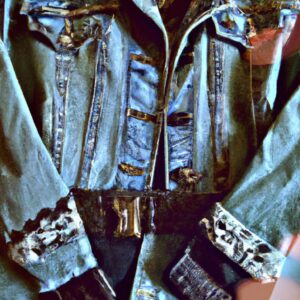
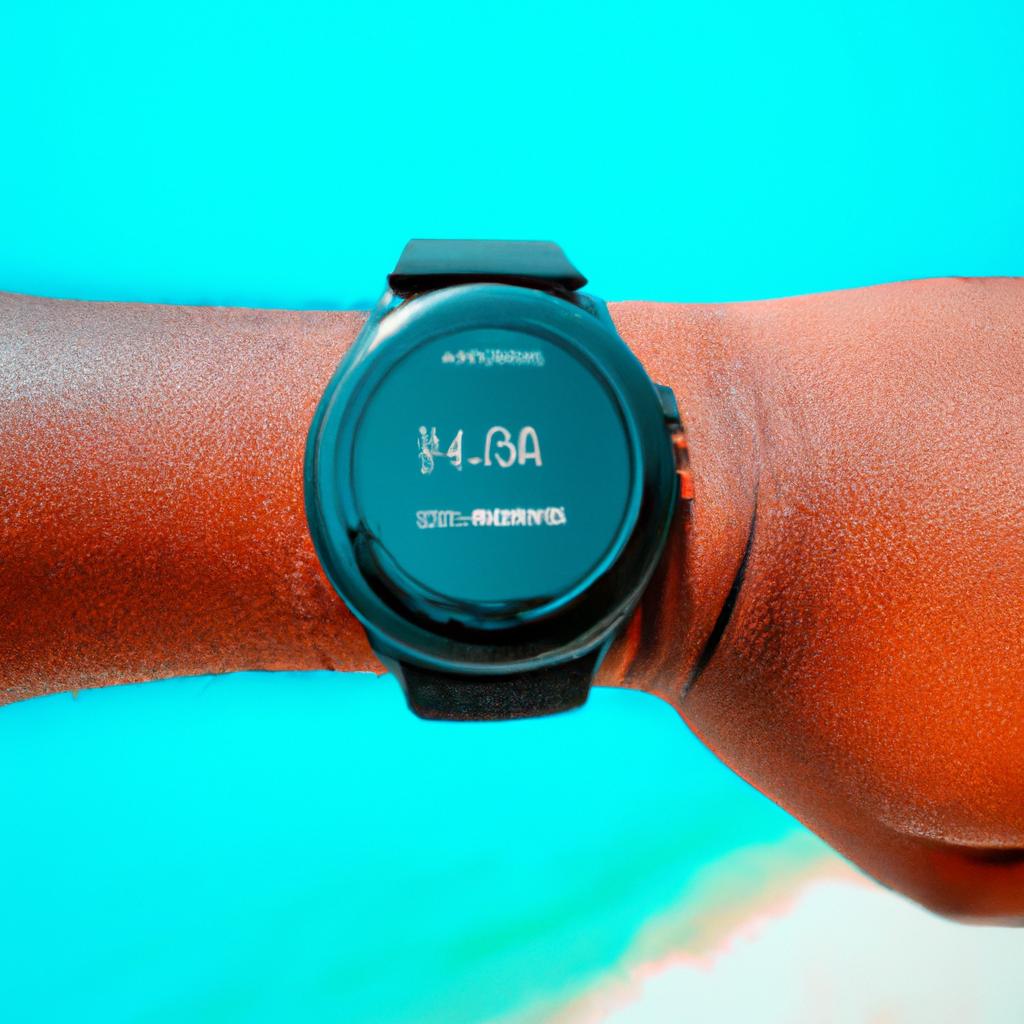 Redefining Fashion: How Startups are Disrupting the Industry
Redefining Fashion: How Startups are Disrupting the Industry  Revolutionizing the Runway: How Social Media is Transforming Fashion
Revolutionizing the Runway: How Social Media is Transforming Fashion 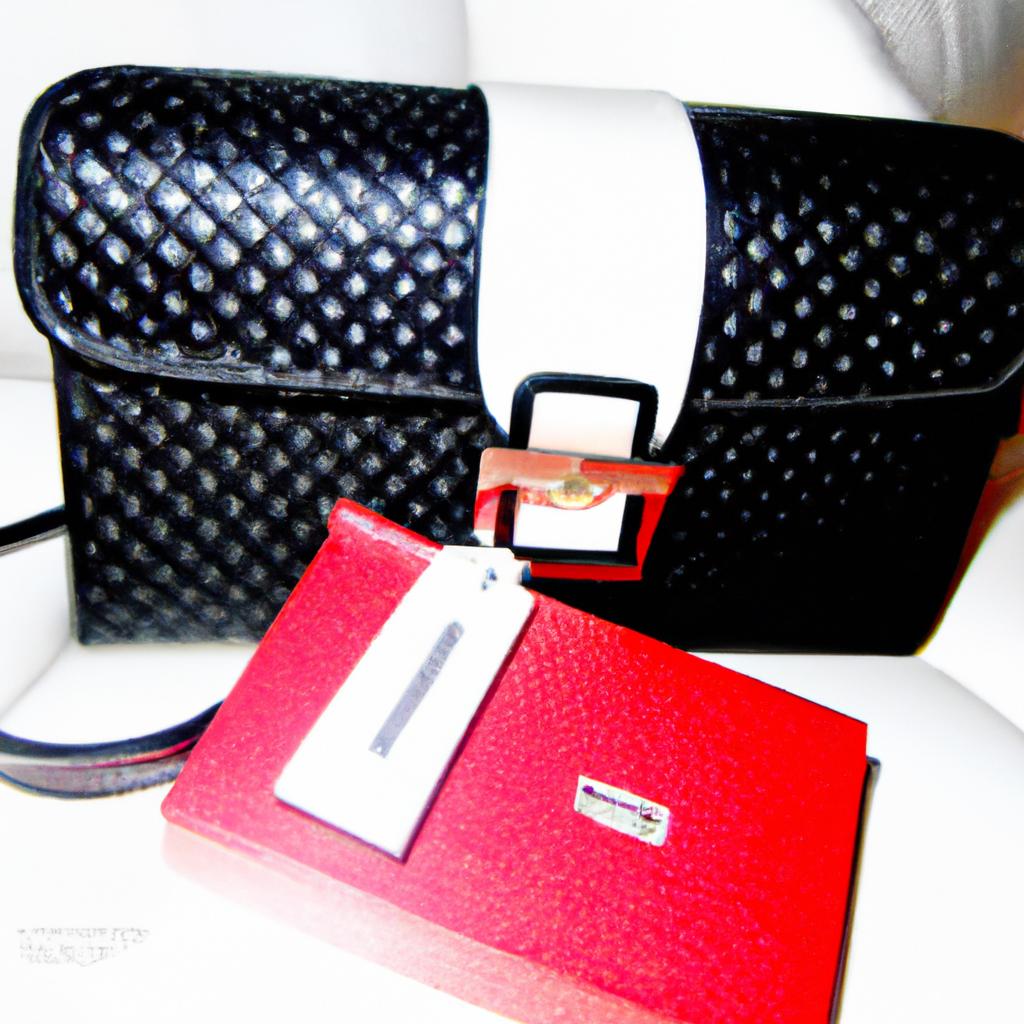 Unveiling the Business of Fashion: A Look into its Impact on the Global Economy
Unveiling the Business of Fashion: A Look into its Impact on the Global Economy  Finland’s Down’s model Maija makes strides on catwalk
Finland’s Down’s model Maija makes strides on catwalk  How to Create Adjustment Layers Based on Color
How to Create Adjustment Layers Based on Color 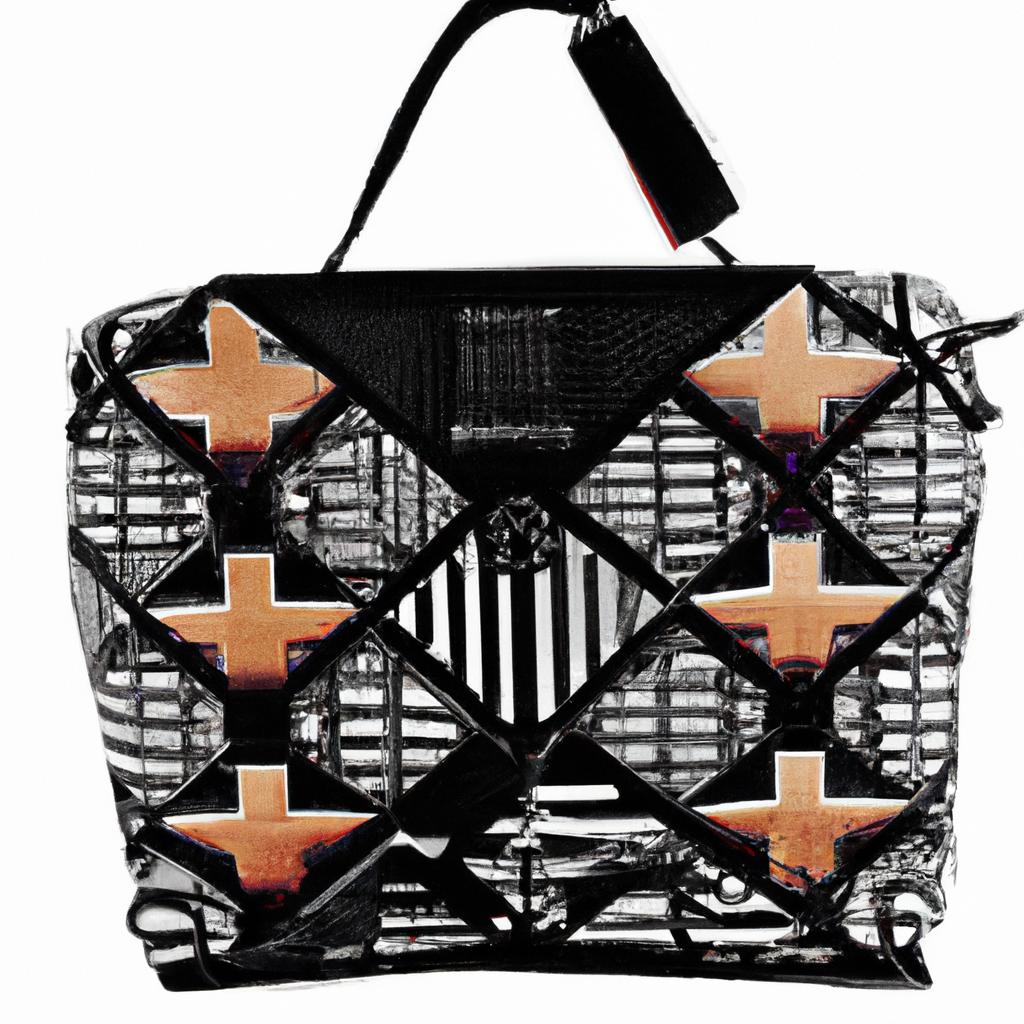 Fashion Fusion: The Impact of Designer Collaborations on the Industry
Fashion Fusion: The Impact of Designer Collaborations on the Industry 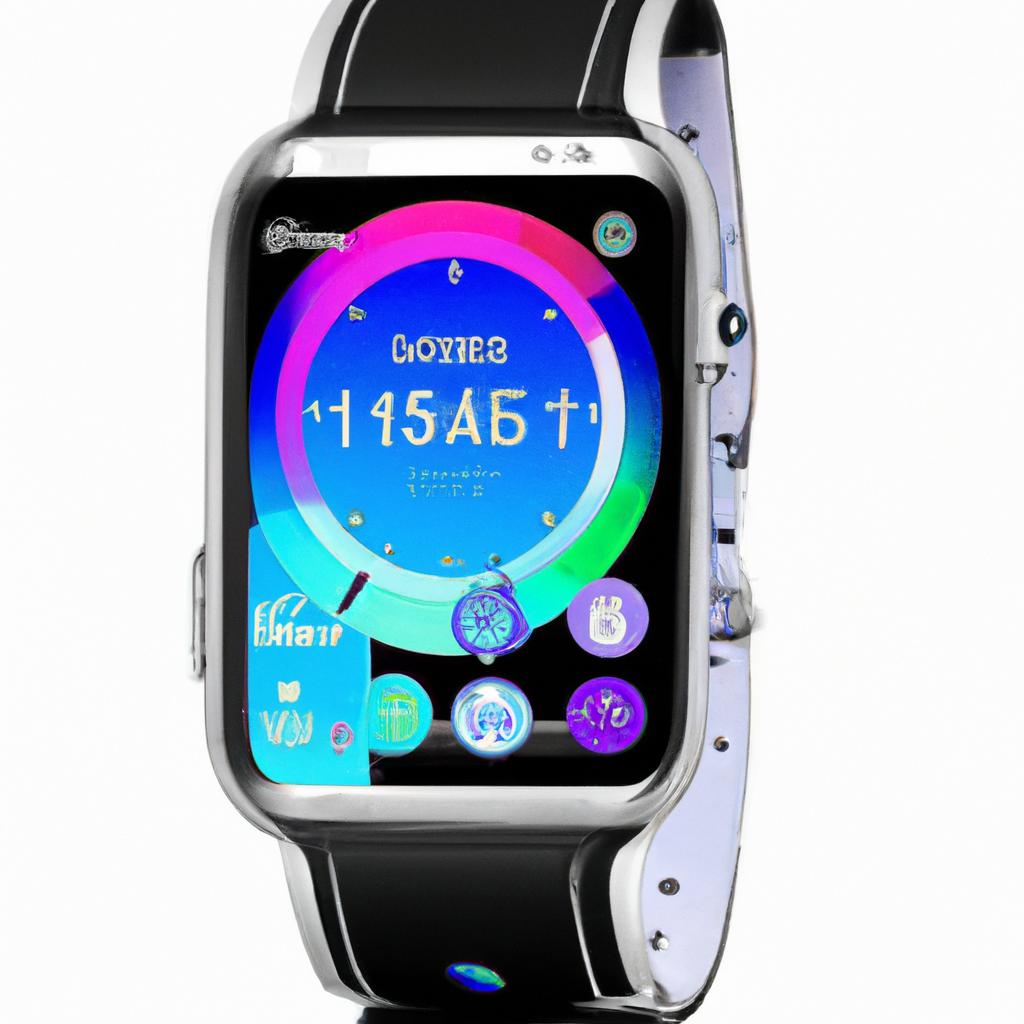 Revolutionizing Fashion: How Technology is Shaping the Industry Today
Revolutionizing Fashion: How Technology is Shaping the Industry Today 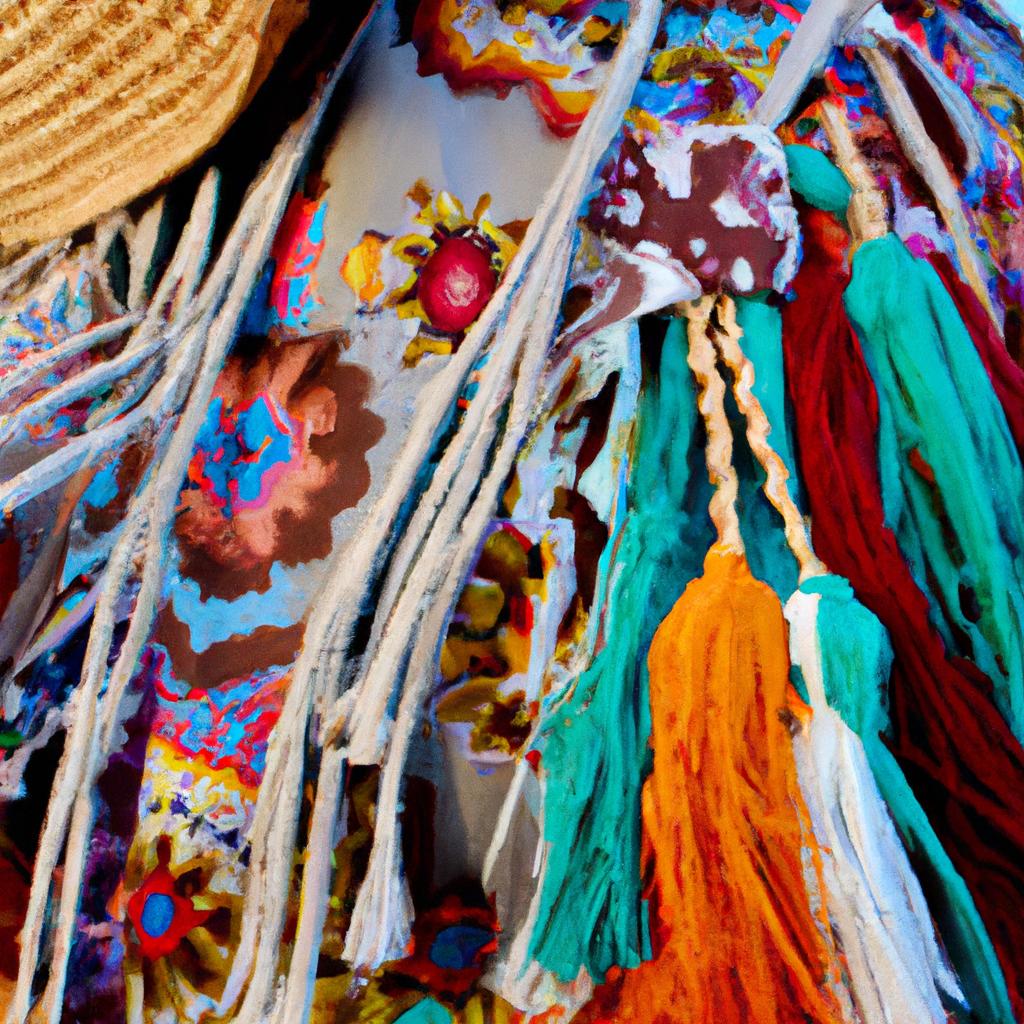 From East to West: Exploring Global Fashion Trends Across Continents
From East to West: Exploring Global Fashion Trends Across Continents  Cruising in Style with CarmelLimo: Because You Deserve to Feel Fancy
Cruising in Style with CarmelLimo: Because You Deserve to Feel Fancy 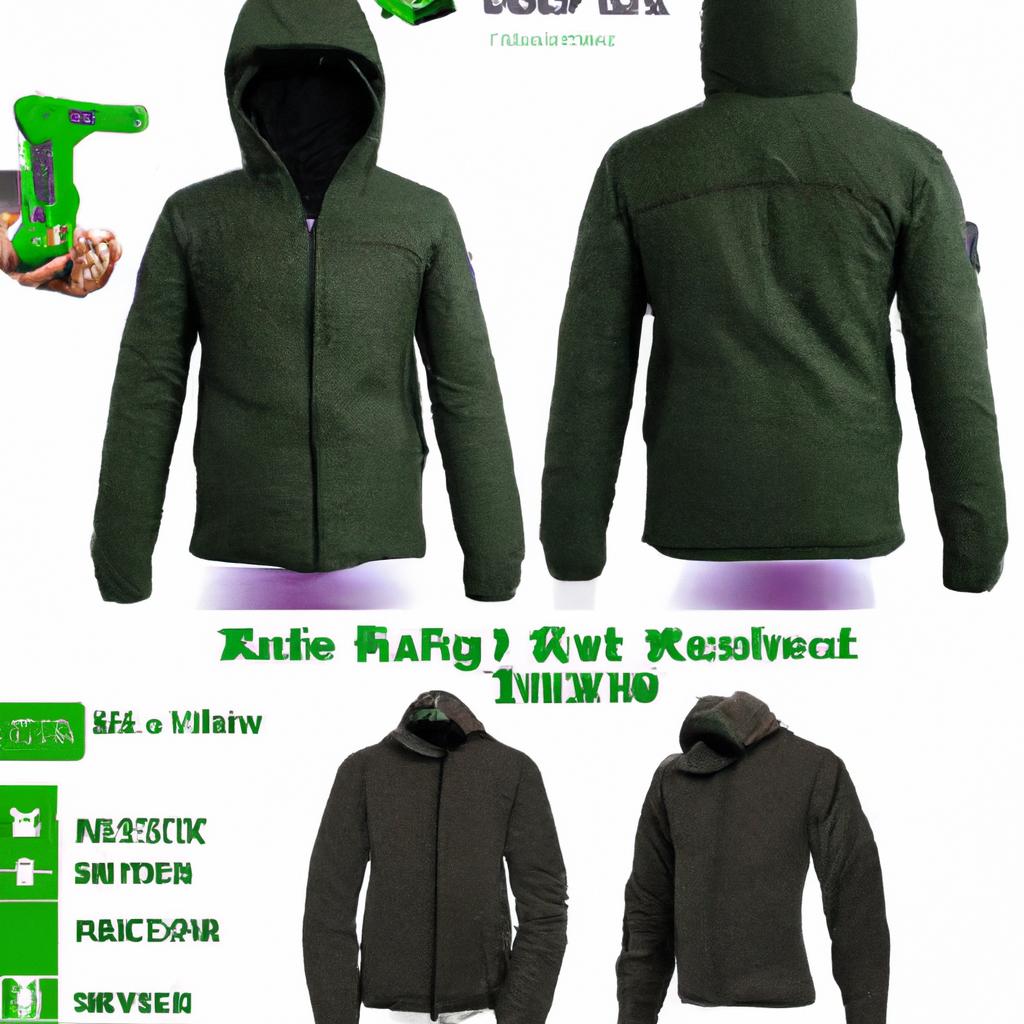 Dress to Impress: Essential Menswear for Every Weather Condition
Dress to Impress: Essential Menswear for Every Weather Condition